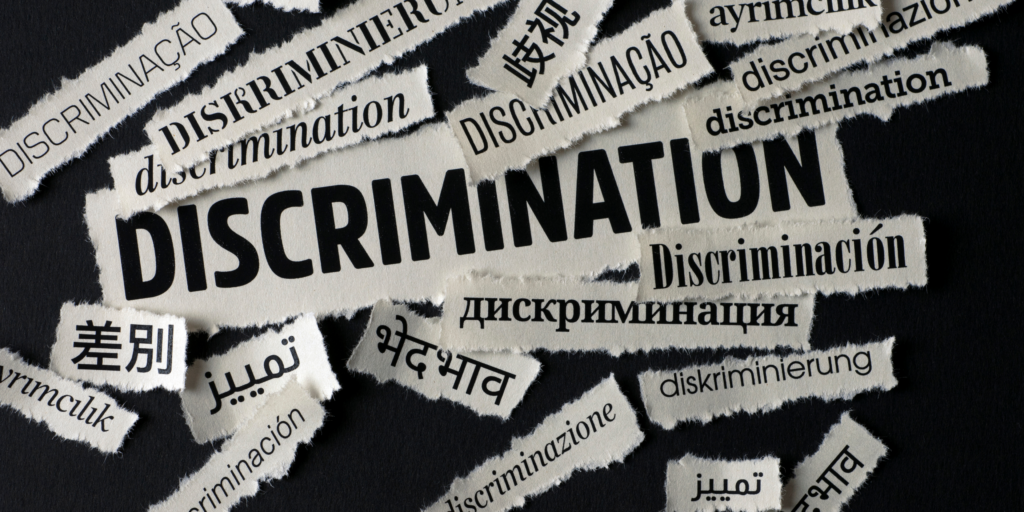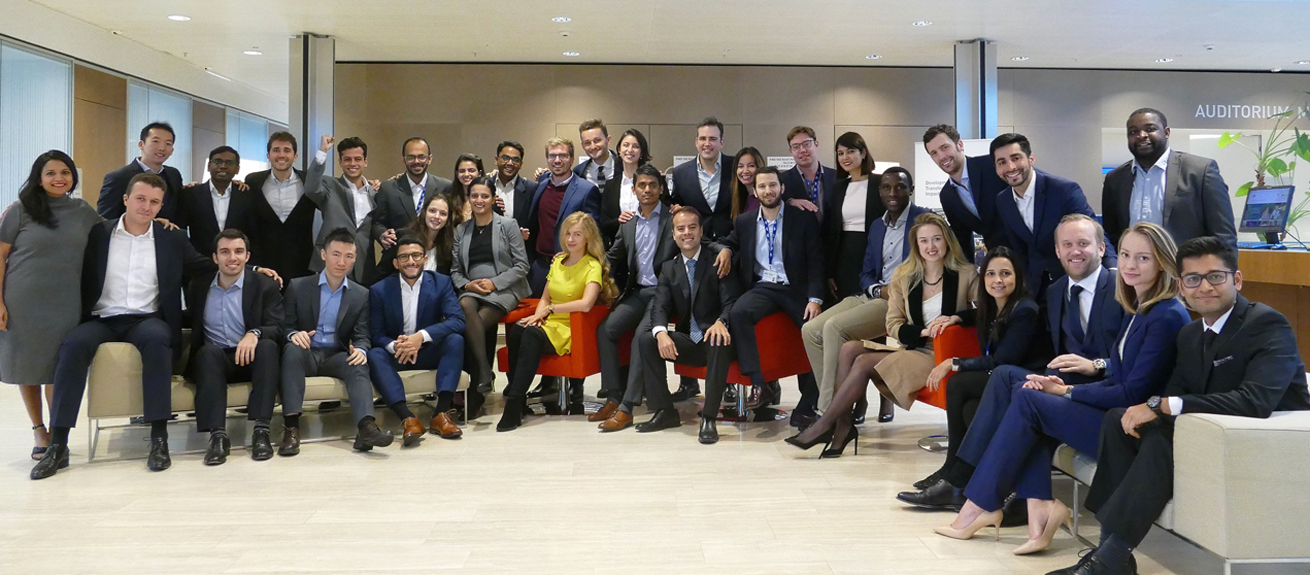Workplace discrimination affects people of all ages, races, genders, and backgrounds.
Discrimination in the workplace can happen in any industry or profession and can take many forms. Sometimes, it’s overt, like when a job applicant is denied a job because of race or gender. Other times, it’s more subtle, like when a certain co-worker is interrupted or talked over in meetings.
Discrimination can negatively impact people’s lives no matter what form it takes. It can make earning a job, promotion, or fair wage harder. It can also lead to feelings of isolation, stress, and anxiety.
That’s why addressing workplace discrimination is so important. We can do this by understanding the different forms of discrimination, speaking up when we see it happening, and creating policies and initiatives promoting workplace equality.
When we create inclusive workplaces, everyone benefits. Employees feel more respected, valued, and empowered. They’re also more likely to be happy, productive, and engaged in their work. In this article, we’ll discuss ways to become a more inclusive leader and develop a workplace where everyone can succeed.
What are the types of workplace discrimination?
Workplace discrimination is a persistent problem that undermines equality and fairness within an organization. Understanding and addressing different types of discrimination at work is crucial for fostering an inclusive, supportive work environment. This also prevents discrimination complaints and helps a business avoid violating discrimination laws.
Workplace discrimination typically appears as unfair treatment, employment practices, or bias directed at people based on personal characteristics, such as:
- Race or national origin: This type of workplace discrimination involves unfair treatment, harassment, or denial of employment opportunities based on someone’s racial or ethnic background.
- Age: Age discrimination involves employment decisions and behaviors based on a person’s age rather than their merit or qualifications.
- Gender: Gender discrimination is the unequal treatment or consideration of someone based on their gender identity. This can manifest as unequal pay, stereotyping, or sexual harassment. It can affect workers of any gender, including people who identify as transgender or those who fall outside of the gender binary, and is an especially common problem for women in the workplace.
- Sexual orientation: Workplace discrimination can also involve treating employees differently based on their sexual orientation. This can include prejudiced behavior like harassment, unfair termination, denial of benefits, or creating a hostile work environment for people in the LGBTQ+ community.
- Disability: Disability discrimination occurs when a workplace treats people with physical or mental disabilities unfairly. It can involve denying reasonable accommodations, refusing employment, offering unequal pay, or excluding them from certain job opportunities.
- Religious beliefs: Religion-based workplace discrimination occurs when a business treats someone differently than their coworkers because of their religion. This can include harassment or hostility, being denied a job or promotion, or getting fired because of their religious beliefs.
What are laws that protect against workplace discrimination?
In the United States, federal laws are in place to safeguard workers with certain protected characteristics from discriminatory practices. These legal protections include:
- Title VII of the Civil Rights Act of 1964: Title VII prohibits workplace discrimination based on race, color, religion, sex, or national origin. It covers various aspects of employment, including hiring, firing, promotions, and terms of employment.
- Americans with Disabilities Act (ADA) of 1990: The ADA protects people with disabilities from employment discrimination and mandates that employers provide them with reasonable accommodations so they can do their job. The Department of Labor also lists other laws that protect people with disabilities.
- Age Discrimination in Employment Act (ADEA): Enacted in 1967, the ADEA prohibits employers from discriminating against people aged 40 or older, safeguarding them from unfair treatment in hiring processes, promotions and benefits decisions, and layoffs. This promotes age diversity in workplaces, combats ageism, and ensures older employees have equal opportunities to contribute and thrive at work.
- The Equal Pay Act of 1963: This law prohibits employers from paying men and women different wages for equal work.
- The Genetic Information Nondiscrimination Act (GINA) of 2008: This recent law prohibits workplace discrimination based on genetic information. It was prompted by increased access to genetic testing and prevents employers from requiring or requesting genetic information from job applicants or employees.
State laws can also offer protections depending on where you work or employ people.
How workplace discrimination impacts business?
Discriminatory practices have far-reaching impacts on individual employees, teams, and organizations. Effects can be emotional and psychological, hampering team dynamics and stifling innovation and creativity. Organizations that exclude or discriminate against people from diverse backgrounds and protected classes miss out on valuable perspectives and experiences that contribute to growth.
How to address and prevent workplace discrimination?
Ensuring a work environment has reasonable accommodations and fair employment and hiring practices is key to avoiding a discrimination claim or complaint to human resources. This starts with leadership – and here are some ways to do it.
Implement diversity and inclusion initiatives
This involves taking action and adopting strategies to create a workplace culture that values and embraces diversity, fosters inclusion, and ensures equal opportunities for all employees. Below are some good starting points.
- Diversity training programs: These educate employees about the importance of diversity, equity, and inclusion (DEI). They can include workshops, seminars, or online courses that provide insights into unconscious biases, cultural competency, and promoting inclusive behaviors.
- Employee resource groups (ERGs): ERGs are voluntary, employee-led groups that provide a platform for networking, support, and advocacy for underrepresented communities within an organization.
- Awareness campaigns and celebrations: Leadership can organize awareness campaigns and celebrations around diversity-related events, such as Black History Month, Pride Month, or International Women’s Day. These initiatives help raise awareness, celebrate diversity, and promote understanding and inclusion among employees.
Establish anti-discrimination policies and practices
Start by ensuring an accessible, comprehensive discrimination complaint process and establishing a prompt and thorough investigation process to address these complaints. Encourage employees to report discrimination incidents promptly and provide them with resources to contact relevant authorities, such as the federal government’s U.S. Equal Employment Opportunity Commission (EEOC) or state human rights commissions.
Ensure your practices comply with federal, state, and local laws and regulations concerning discrimination and harassment.

Take complaints seriously
Taking discrimination complaints seriously is important for creating a safe and inclusive work environment. It involves active listening, empathy, and prompt response to ensure individuals feel supported and reassured. You must protect those reporting discrimination by respecting their confidentiality and privacy. Conduct thorough investigations involving trained, impartial investigators who can document findings and collect evidence. Take all appropriate actions and clearly communicate with the parties involved to demonstrate the organization’s commitment to addressing discrimination and supporting affected individuals.
Foster a safe, inclusive work environment
The following tips can help you create the safe, inclusive work environment your team needs to thrive.
- Promote a culture of respect: Set clear expectations that all employees should be treated with respect and dignity regardless of their background or identity. Encourage open and honest communication, mutual understanding, and empathy among team members.
- Establish clear anti-discrimination policies: Develop comprehensive anti-discrimination policies that explicitly state the organization’s commitment to maintaining a discrimination-free workplace. Clearly define prohibited behaviors, provide examples, and outline the consequences for violations. Communicate these policies effectively to all employees.
- Encourage reporting and support systems: Provide a safe and confidential reporting path for employees to report discrimination, harassment, or misconduct. Ensure those who come forward are protected from retaliation and provide appropriate support, such as counseling or employee assistance programs.
- Celebrate diversity: Recognize and celebrate your workforce’s diverse backgrounds, cultures, and identities. Organize events or activities that promote understanding, respect, and appreciation for diversity, such as cultural celebrations or diversity-themed workshops.
Continuously educate and evolve: Stay informed about the latest research, best practices, and legal requirements related to diversity and inclusion. You can also require anti-discrimination training to prevent these problems at their source and continuously educate employees about creating and maintaining a safe and inclusive work environment.
Empowering a discrimination-free workplace
Creating and maintaining a discrimination-free work environment requires a collective commitment to fostering respect, embracing diversity and inclusion, and implementing effective policies and practices. This benefits workers and contributes to increased productivity, innovation, and overall organizational success.
Find leadership resources to help you foster safe, inclusive, and productive workplaces at IMD. Our world-class executive education programs are designed to prepare leaders for advanced management positions where they can create organizational change for a better world.
